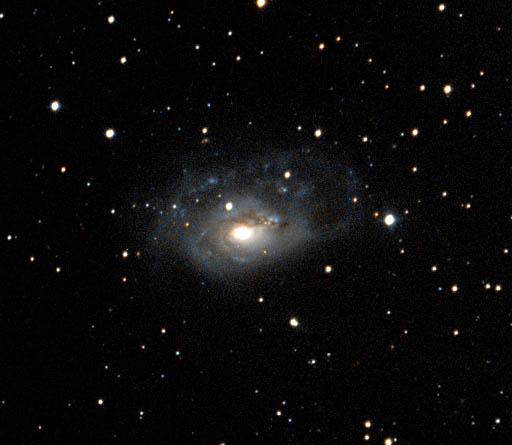![]()

|
![]()
| Date: | 26.10.95 | Time: | 4:19 UT | Exposure: | V:20m, I:20m |
|---|---|---|---|---|---|
| Field of View: | 14' x 11' (big image) | Receiver: | WWFPP, 20482 CCD | Filter: | V, I |
| Instrument: | 1.23m | Observatory: | Calar Alto | Observer: | T. Credner, S. Kohle |
Astronomical Institutes of the University of Bonn
Its distance is 60 Mpc, adopting a Hubble value of H0=75 km/s/Mpc.
NGC 1961 is known to be a very massive spiral galaxy with strong star formation.
The upper wing shows this very blue star population, indicating the young age
of this part. The bright blue stars are very massive, waste their hydrogen
and so have a very short lifetime. Indeed, just back in 1998 the violant death of a star
was observed as Supernova explosion in NGC 1961
(IAU Circular 7016).
The peculiar morphological appearance remains a puzzle to astronomers.
The neighboring galaxies are too small and not close enough for gravitational
interaction (see the small spiral companion in the big image).
The possibility of interaction with a hot intergalactic medium
(Shostak et al. 1982) could not be confirmed by recent X-ray observations (Pence & Rots 1997).
And a former merging event should result in a different morphology and kinematics
(Shostak et al. 1982).
The above image is a two color composit. Two exposures were taken with Johnson V and I filters and are represented with the two complementary colors blue and orange to show the data in a natural appearing way with the right chromatic order.
References:
U. Lisenfeld et al.: 1998, MNRAS, 300, 30